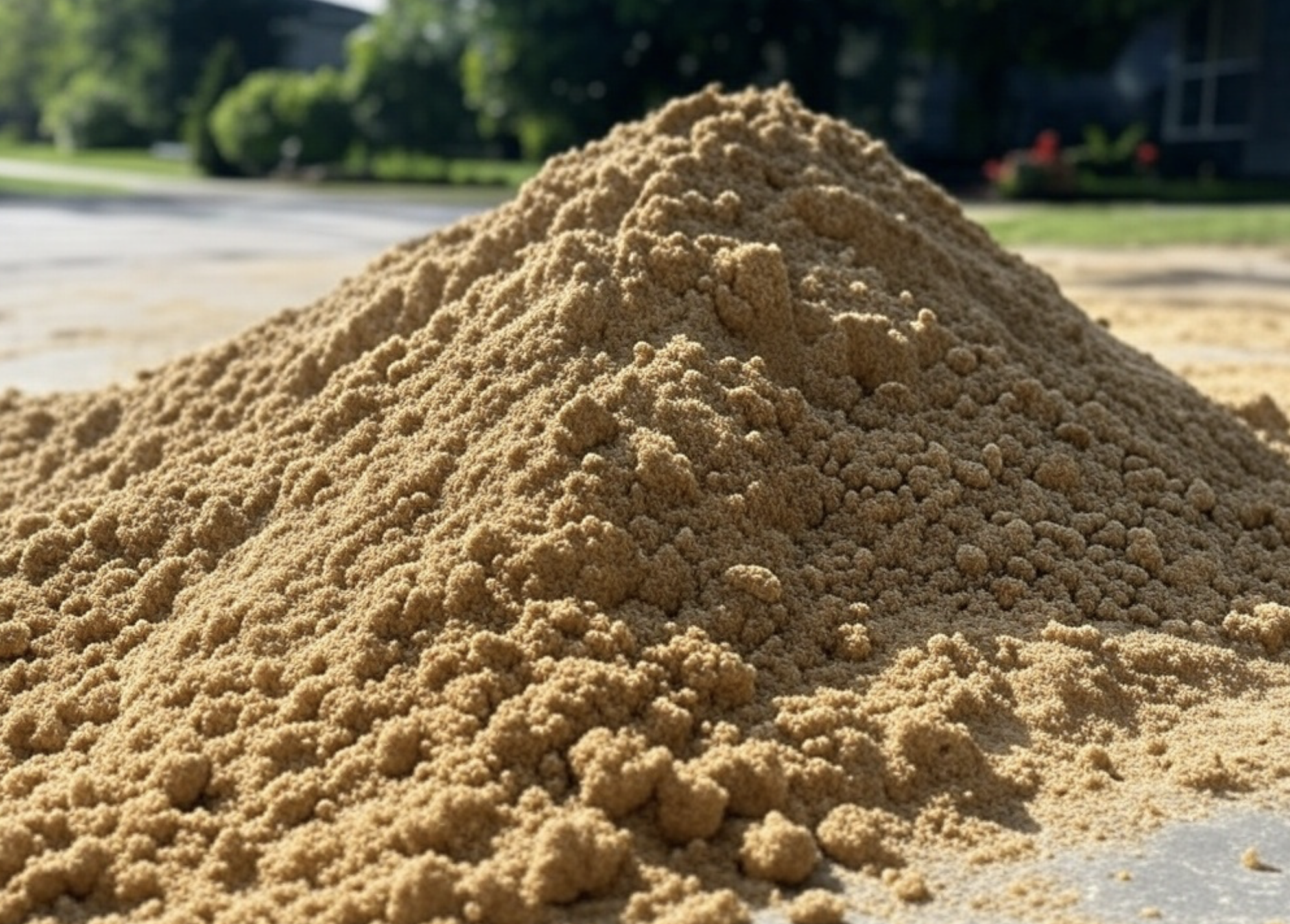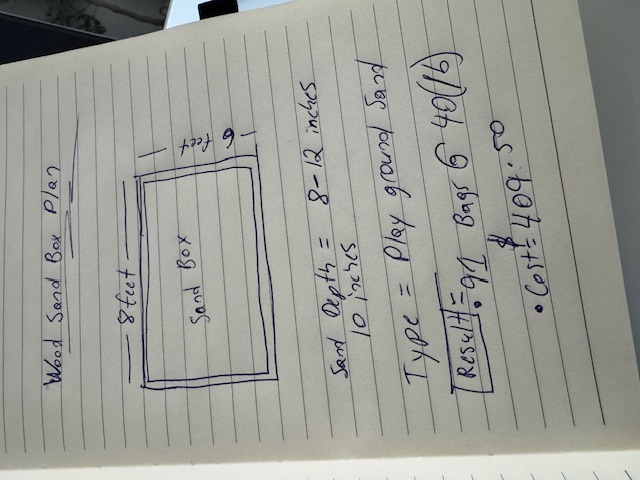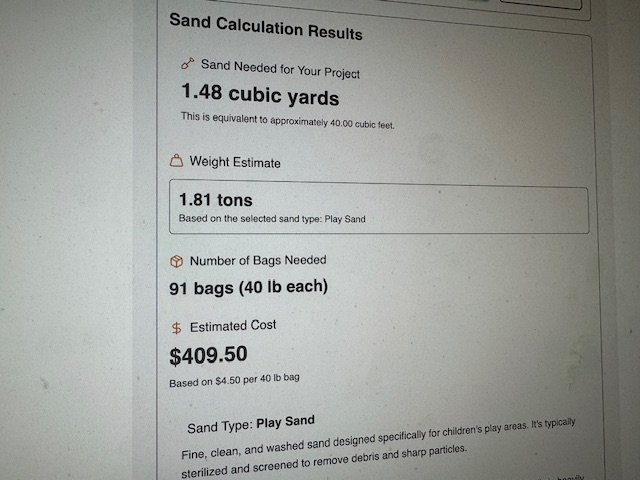Sand Calculator: Find The Exact Amount You Need Based on Sand Type
Find out how much sand you'll need based on the dimensions of your project. Copy and save the results below.
How to Use the Sand Calculator
This calculator tells you how much sand you'll need to buy for almost any project. You can get measurements in cubic yards, tons, or bags based on the project dimensions, area, or volume and your selected sand type.
Step 1: Choose Your Calculation Method
The calculator offers three ways to determine sand needs:
- Calculate by Dimensions: Enter the length and width of your project area.
- Calculate by Area: Enter the total area directly if you already know it.
- Calculate by Volume: Enter the volume directly if you already know it.
Step 2: Enter Your Measurements
Input your project measurements using your preferred units and select your desired sand depth.

Step 3: Select Your Sand Type
Choose the type of sand that best fits your project needs:
- All Purpose Sand: Versatile sand suitable for most general construction and landscaping projects.
- Play Sand: Fine, clean sand prepared for children's sandboxes and play areas.
- Masonry Sand: Fine, smooth sand ideal for mortar mixes and bricklaying.
- Concrete Sand: Coarse, gritty sand designed for mixing with cement to create concrete.
- Paver Sand: Fine sand for leveling paver stones or filling joints between pavers.
Step 4: Specify Your Purchase
This is an optional field that allows you to select how you plan to purchase your sand (bags, cubic yards, or tons) and enter local pricing information. Complete this field for the most accurate pricing results.
Step 5: Calculate and Review Results
Click "Calculate Sand" to generate your results, which include volume, weight, number of bags, and cost estimates.
Common Sand Uses and Required Depths
Sand is one of the most versatile building materials on Earth and has all sorts of applications. And depending on the project, you'll need to purchase different quantities of sand. Here are some examples.
| Project Type | Recommended Depth | Recommended Sand Type |
|---|---|---|
| Children's Sandbox | 8-12 inches | Play Sand |
| Sand Volleyball Court | 12-18 inches | Silica Sand or Masonry Sand |
| Paver Base | 1-2 inches | Paver Sand |
| Pool Installation Base | 2-3 inches | Masonry Sand |
| Lawn Leveling | 0.25-0.5 inches | All Purpose or Masonry Sand |

How the Calculator Works
Core Volume Calculations
| Calculation | Formula |
|---|---|
| Area from Dimensions | Length × Width (converted to sq ft) |
| Volume in Cubic Feet | Area (sq ft) × Depth (ft) |
| Volume in Cubic Yards | Cubic Feet ÷ 27 |
| Weight in Tons | Cubic Yards × Density Factor |
| Number of Bags | (Weight in Tons × 2000) ÷ Bag Size (lbs) |
Sand Type Density Factors
The calculator uses different density factors for each sand type to provide accurate weight estimates.
| Sand Type | Density (lb/ft³) | Density Factor (tons/yd³) |
|---|---|---|
| All Purpose Sand | ~100 lb/ft³ | 1.35 |
| Dry Sand | ~95 lb/ft³ | 1.28 |
| Wet Sand | ~115 lb/ft³ | 1.55 |
| Play Sand | ~90 lb/ft³ | 1.22 |
| Concrete Sand | ~105 lb/ft³ | 1.42 |

Key Formulas Used in This Calculator
The sand calculator uses these formulas to calculate the results. The calculations follow a logical sequence, converting your measurements into standard units, then applying the appropriate formulas based on your sand type selection.
| Calculation | Formula | Example |
|---|---|---|
| Area | Length × Width | 6 ft × 6 ft = 36 sq ft |
| Volume | Area × Depth | 36 sq ft × 0.833 ft = 29.99 cu ft |
| Cubic Yards | Cubic Feet ÷ 27 | 29.99 cu ft ÷ 27 = 1.11 cu yd |
| Weight (tons) | Cubic Yards × Density Factor | 1.11 cu yd × 1.22 = 1.35 tons |
| Bags Needed | (Weight in lbs) ÷ Bag Size | (1.35 × 2000) ÷ 40 = 68 bags |
The key to accurate sand estimates lies in understanding how different sand types have different densities. For example, wet sand is heavier per cubic yard than dry or play sand. I made the calculator to account for these differences by adding specific density factors for each sand type. Not all sand is created equal so your calculations for all sand types shouldn't be the same either.
Unit Conversions:
- 1 cubic yard = 27 cubic feet
- 1 ton = 2,000 pounds
- 1 foot = 12 inches
- 1 yard = 3 feet
In my opinion, you'll want to add a 5-10% buffer to the calculated amount. This accounts for natural settling, uneven surfaces, and inevitable waste during installation. This small additional investment up front can save you the frustration, time, and money running back to quarry for additional supplies or having more delivered.
Tips for Working with Sand
- Always wear a dust mask when working with dry sand to avoid inhaling silica particles.
- For large projects have sand delivered rather than making multiple trips with bags.
- Order 5-10% extra sand to account for settling, compaction, and spills.
- Wet sand is significantly heavier than dry sand, which affects transportation and handling.
- Not all sand is the same. Pick the right sand for your specific project.
What type of DIY project are you planning next? You might also be interested in this Topsoil Calculator for your next gardening project or the Mulch Bag Calculator.
